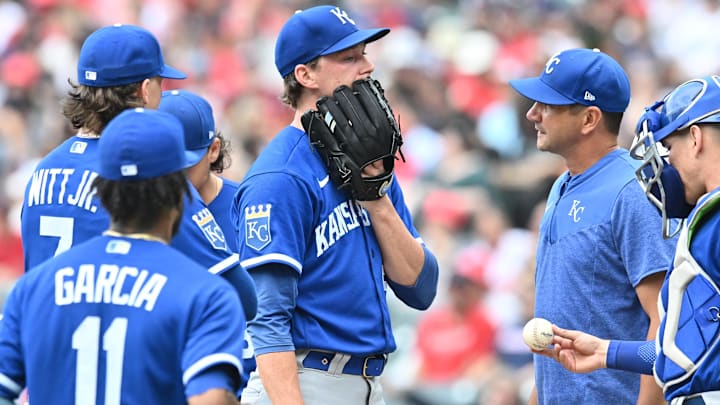The Royals have discovered the curve
The Royals front office has long had an affinity for the fastball, at times to the club's detriment. But the 2024 club doesn’t have the same look. What is clear is that Picollo built a new collection of pitchers with devastating curveballs. Four of five Royals starters throw the pitch 10% or more of the time. That must be some sort of Royals record.
According to Brooks Baseball, Ragans throws his curveball as the first pitch against RHBs 23% of the time; he’s not afraid to slip a slow breaker into his mix. And that pitch has proven to be a whiff machine at 66.7%. Lugo also relies heavily on the curve, throwing it 26% of the time. The hard-hit rate on his is only 29.4%, and since the start of 2023, he has allowed only two home runs off it.
Marsh is using his curve 15.57% of the time with a 31.6% whiff rate. He has struggled a bit with vertical movement, but that should improve. And Wacha isn't one to shy away from the curve. It's a pitch that has grown more effective as he has aged away from throwing gas. In 2023, it was incredibly effective — opponents batted only .172 against against it. They are currently batting .125 this season.
Why the curveball uptick? It's a pitch which typically results in lower velocity hits and more ground balls. As the Royals play half their games in spacious Kauffman Stadium, they can use those characteristics to their advantage. If they can get opponents to put the ball in play, Kansas City starters can go deeper into games, reducing WHIP and decreasing strain on the bullpen. It's a deliberate move from Picollo and Sweeney to put curveball pitchers on the field.
WHIP is certainly a key to Royals 2024 improvements
It's great to see that the Royals have made some serious improvements to their rotation. Sweeney has done an excellent job focusing the team on producing a low WHIP by shortening at-bats and forcing opponents to put the ball in play. Increasing pitch variety, introducing curveballs, focusing on pitch location, and not increasing strikeouts is helping a team that has spent the better part of a decade at the bottom of the majors.
